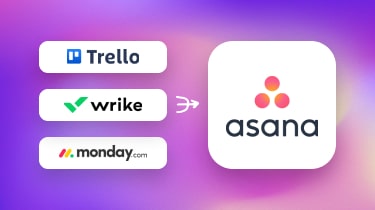If you’re a small, single-team Microsoft 365 shop, Planner can be perfectly fine for basic boards and tasks. The moment you need cross-team visibility, governed templates, intake → approvals, and automation at scale, Asana typically delivers faster time-to-value with less glue work.
1) Scorecard for PH enterprises
Use this quick scorecard to align on what matters before you debate features.
Reality check: You can make Planner do more with Power Automate/BI—just budget the build/maintain effort. Asana aims to make those same outcomes available with less custom work.
2) When Planner is “good enough”
Stay on Planner if most of the following are true:
- One or two small teams; low dependency work
- Tasks don’t require approvals or SLAs
- Reporting needs are light and fine in basic charts
- You already invested in Power Automate/Power BI flows and they’re stable
- No near-term requirement for governed templates or multi-team portfolio views
3) Where Asana wins at scale
Choose Asana when at least two of these matter:
- Governed templates and fields taxonomy across departments
- Intake → triage → approvals with SLAs and routings
- Rules for escalations, handoffs, and due-date math—without building flows from scratch
- Portfolio reporting leaders review weekly (on-time rate, blockers, cycle time)
- Admin controls that support guest access, de-provisioning, and change management
Example at a glance:
- A Client Onboarding template with an intake form that maps to custom fields (Client Tier, SLA, Risk).
- Rules auto-assign the right owner, set due dates from priority, and escalate P1 tasks.
- A Portfolio shows on-time completion and top blockers—no slides needed.
4) Migration notes (Planner → Asana)
Keep the first migration small and defensible:
- Pick two pilot workflows (e.g., Client Onboarding and Marketing Sprint).
- Field mapping: decide the minimal fields you need (Status, Priority, Department, SLA, Risk).
- Freeze changes on the legacy boards for pilot scope to avoid drift.
- Train with your data: short hands-on sessions for managers and doers.
- Validate dashboards with leadership before expanding to more teams.
5) ROI snapshot (simple math you can defend)
If 40 users save 25 minutes/day via rules, intake routing, and portfolio visibility → ~16.7 hours/day.
At a blended ₱800/hour, that’s ₱13,360/day → ~₱2.7M/year (200 working days).
Add “meetings removed” (status updates replaced by dashboards) for extra gain.
6) Decision-matrix workbook (free)
To make this objective, score your requirements with weights:
Download: Decision Matrix — Asana vs Planner (xlsx)
Edit the weights (0–1) and scores (1–5) per criterion.
The sheet calculates totals and surfaces trade-offs transparently.
7) Next steps
Not sure yet? Book a 15-min discovery and we’ll apply the matrix to your environment.
Ready to pilot? Start with two workflows and the governance starter from our Asana Playbook.
.svg)



